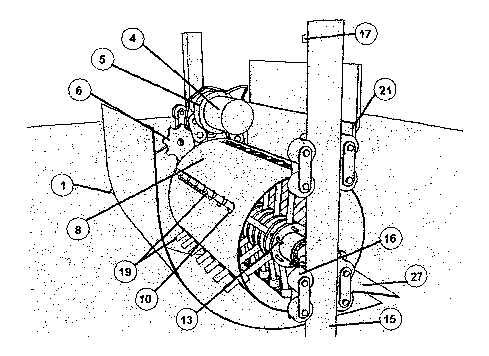Some of the information on this Web page has been provided by external sources. The Government of Canada is not responsible for the accuracy, reliability or currency of the information supplied by external sources. Users wishing to rely upon this information should consult directly with the source of the information. Content provided by external sources is not subject to official languages, privacy and accessibility requirements.
Any discrepancies in the text and image of the Claims and Abstract are due to differing posting times. Text of the Claims and Abstract are posted:
| (12) Patent Application: | (11) CA 2575210 |
|---|---|
| (54) English Title: | WASTE PRESS DEVICE |
| (54) French Title: | DISPOSITIF DE PRESSE DE DECHETS |
| Status: | Deemed Abandoned and Beyond the Period of Reinstatement - Pending Response to Notice of Disregarded Communication |
| (51) International Patent Classification (IPC): |
|
|---|---|
| (72) Inventors : |
|
| (73) Owners : |
|
| (71) Applicants : |
|
| (74) Agent: | BORDEN LADNER GERVAIS LLP |
| (74) Associate agent: | |
| (45) Issued: | |
| (86) PCT Filing Date: | 2005-07-26 |
| (87) Open to Public Inspection: | 2006-02-02 |
| Availability of licence: | N/A |
| Dedicated to the Public: | N/A |
| (25) Language of filing: | English |
| Patent Cooperation Treaty (PCT): | Yes |
|---|---|
| (86) PCT Filing Number: | PCT/FI2005/000341 |
| (87) International Publication Number: | WO 2006010789 |
| (85) National Entry: | 2007-01-25 |
| (30) Application Priority Data: | ||||||
|---|---|---|---|---|---|---|
|
The invention relates to a waste press device consisting of a rotating drum
(8). The drum (8) contains an eccentric internal shaft (9), from which
striking rods (12) pass through a inlet hole (10) and through the drum, with
the drum end reciprocating axially during one revolution.
L'invention concerne un dispositif de presse de déchets pourvu d'un tambour rotatif (8). Ce tambour (8) présente un arbre interne excentrique (9), à partir duquel des tiges de frappe (12) s'étendent à travers un trou d'entrée (10) et à travers le tambour, l'extrémité du tambour effectuant un mouvement de va-et-vient axial au cours d'une révolution.
Note: Claims are shown in the official language in which they were submitted.
Note: Descriptions are shown in the official language in which they were submitted.

2024-08-01:As part of the Next Generation Patents (NGP) transition, the Canadian Patents Database (CPD) now contains a more detailed Event History, which replicates the Event Log of our new back-office solution.
Please note that "Inactive:" events refers to events no longer in use in our new back-office solution.
For a clearer understanding of the status of the application/patent presented on this page, the site Disclaimer , as well as the definitions for Patent , Event History , Maintenance Fee and Payment History should be consulted.
| Description | Date |
|---|---|
| Application Not Reinstated by Deadline | 2009-07-27 |
| Time Limit for Reversal Expired | 2009-07-27 |
| Deemed Abandoned - Failure to Respond to Maintenance Fee Notice | 2008-07-28 |
| Letter Sent | 2007-05-23 |
| Letter Sent | 2007-05-23 |
| Inactive: Cover page published | 2007-04-11 |
| Inactive: Single transfer | 2007-04-03 |
| Inactive: Courtesy letter - Evidence | 2007-04-03 |
| Inactive: Notice - National entry - No RFE | 2007-03-28 |
| Application Received - PCT | 2007-02-22 |
| National Entry Requirements Determined Compliant | 2007-01-25 |
| Application Published (Open to Public Inspection) | 2006-02-02 |
| Abandonment Date | Reason | Reinstatement Date |
|---|---|---|
| 2008-07-28 |
The last payment was received on 2007-07-05
Note : If the full payment has not been received on or before the date indicated, a further fee may be required which may be one of the following
Please refer to the CIPO Patent Fees web page to see all current fee amounts.
| Fee Type | Anniversary Year | Due Date | Paid Date |
|---|---|---|---|
| Basic national fee - standard | 2007-01-25 | ||
| Registration of a document | 2007-04-03 | ||
| MF (application, 2nd anniv.) - standard | 02 | 2007-07-26 | 2007-07-05 |
Note: Records showing the ownership history in alphabetical order.
| Current Owners on Record |
|---|
| NIMATEK OY |
| Past Owners on Record |
|---|
| MARKO TAPANI LAUHIALA |
| NIKLAS KARI ERIK KAARLA |